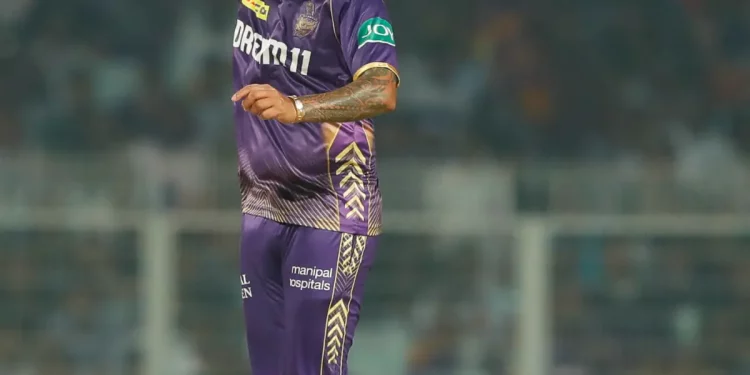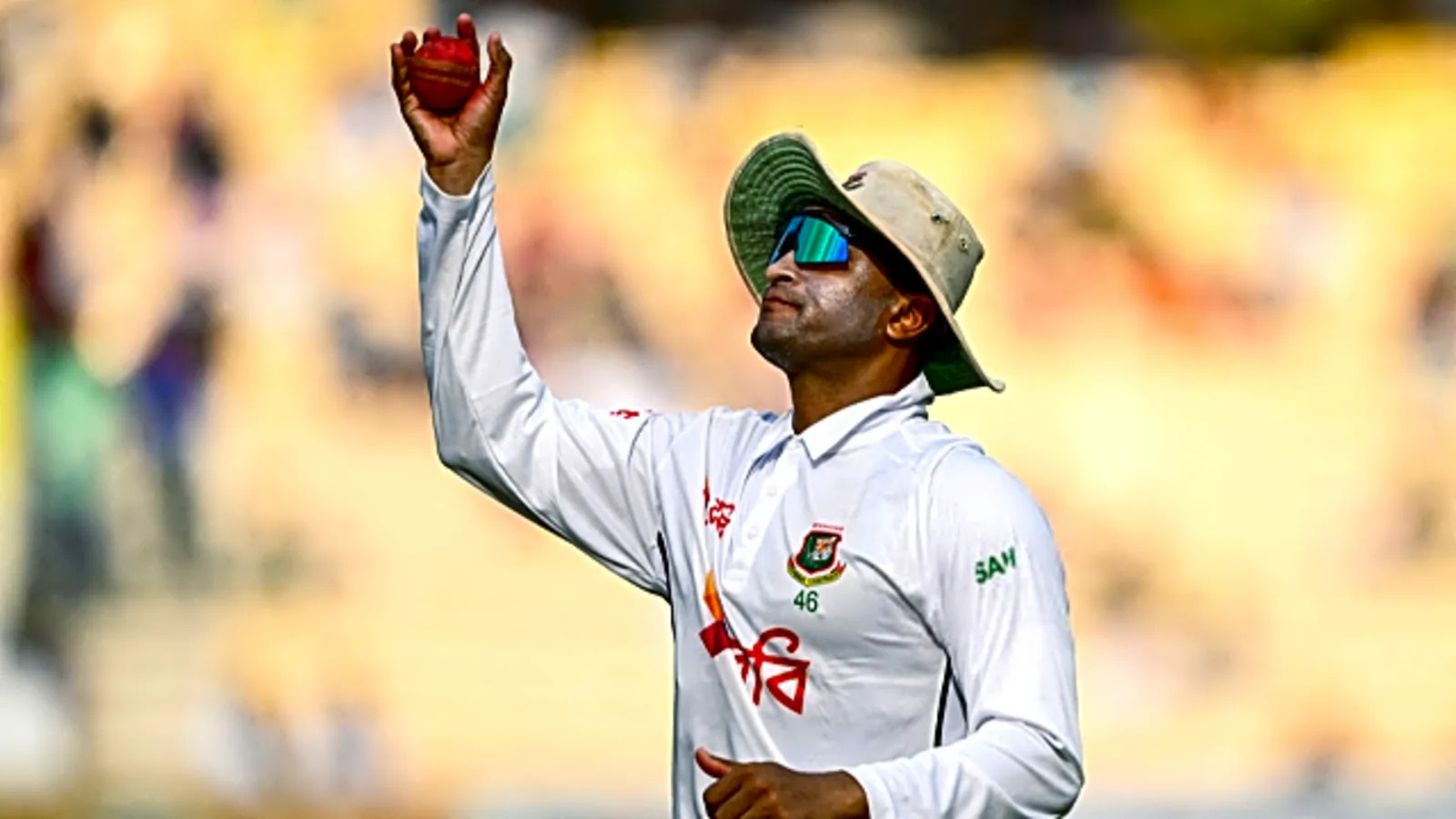Sunil Narine, KKR’s top scorer and one of the players who helped them surpass their captain’s prediction and achieve the magic number 272, was standing a few metres away from him.
Soon after the Kolkata Knight Riders amassed the second-highest IPL total, captain Shreyas Iyer was questioned about whether he had ever considered going above 277.
He said, “No, it didn’t, to be honest.” “We thought we would reach 210-220 but 270 was an icing on the cake.”
Because of his amazing knock, Sunil Narine was rightfully named Player of the Match. It all adds up until you understand how many goals he scored.85 runs. out of 272 in total.
While it was his greatest T20 score and came off just 29 balls, Sunil Narine total was just roughly 31% of what his team scored that evening.
To put things in perspective, of the 200+ IPL totals, the highest scorer has only contributed less in 25% of the matches than Sunil Narine did against the Delhi Capitals.
It’s an ancient cricket belief that “set batters needing to make it big” to benefit the team is validated by this statistic. In reality, one “daddy” innings has frequently provided the foundation of large IPL totals. If you look at the top 10 individual results from the competition, the person who has contributed the least to his team is 51.63%..
| Batter | Score | Team Total | % of Team Runs |
|---|---|---|---|
| B McCullum | 158 | 222 | 71.17 |
| R Pant | 128 | 187 | 68.45 |
| Q de kock | 140 | 210 | 66.67 |
| C Gayle | 175 | 263 | 66.54 |
| KL Rahul | 132 | 206 | 64.08 |
| D Warner | 126 | 209 | 60.29 |
| C Gayle | 128 | 215 | 59.53 |
| Y Jaiswal | 124 | 212 | 58.49 |
| AB de Villiers | 133 | 235 | 56.60 |
| J Buttler | 124 | 220 | 56.36 |
| S Gill | 129 | 233 | 55.36 |
| AB de Villiers | 129 | 248 | 52.02 |
| M Vijay | 127 | 246 | 51.63 |
However, it looks like the IPL’s big knock era is coming to an end. The way that Sunil Narine contributed and helped KKR reach 272 was not too unlike from the way that Sunrisers Hyderabad achieved the highest IPL total in the previous week. Although Heinrich Klaasen’s top score of 80* represented just approximately 28.8% of his team total, SRH was nevertheless able to easily surpass Royal Challengers Bengaluru’s all-time record of 263 and surpass it by a considerable margin.
It’s a part of a broader trend in T20 cricket that involves using the knives out strategy and boosting team productivity. Teams now know that “anchor batting” is not the best strategy because more runs are being scored at a faster rate than ever before thanks to improved bats, flatter pitches, and laws that favour bowlers. The best approach is to use brief but impactful cameos that maximise the amount of risk taken with each delivery and, consequently, the number of runs scored.
The observable trend is also supported by data. In IPL 2023, the average top-score in innings with 200+ runs scored was the lowest. This trend appears likely to continue in the tiny sample size of this edition.
| Season | 200+ totals | Avg. top score |
|---|---|---|
| 2024 | 6 | 67.8 |
| 2023 | 37 | 77 |
| 2018 | 15 | 78 |
| 2022 | 18 | 81 |
| 2019 | 11 | 81 |
| 2020 | 13 | 83 |
| 2014 | 9 | 84 |
| 2017 | 10 | 84 |
It’s not totally surprising that Sunil Narine can back off and flat-bat an Anrich Nortje delivery clocked at 144 kph over a lengthy distance. However, it tells a tale that he can afford to do so given that he is well-positioned at 76 in the 12th over. Furthermore, it is indicative of how increased risk-taking is deducting from individual scores and increasing the team total that players like Andre Russell, Shreyas Iyer, Rinku Singh, and Venkatesh Iyer can all afford to bat with the same freedom.
With only 16 games played in the season, six totals have already surpassed 200. Two of those totals surpass the highest IPL team total, which stood for 11 seasons, while three of them totals exceed 245.
The Impact Player rule, in the opinion of Delhi Capitals coach Ricky Ponting, is another factor contributing to the declining top scores and the rising team totals.
“I think the impact players played a small part in that,” Ponting remarked following DC’s loss in Visakhapatnam. “The majority of teams now have a decent batsman at number nine, and occasionally even a specialist batter at number eight. That is undoubtedly beneficial and allows the batting team to exert more pressure earlier.”
Venkatesh Iyer, who had started the batting for KKR in the past and left the game at number three this season, batted at number seven in this encounter. At the fall of the sixth wicket against DC, Ramandeep Singh, who bats significantly higher in the local circuit and has been ranked No. 6 for KKR this season, came out to bat.
ALSO READ-KKR smash DC led by Sunil Narine and Raghuvanshi.
According to Ponting, the additional cushioning provided by an Impact Player hitter at the lower end of the order is assisting the middle and top order in overcoming their “fear” of losing wickets, which is resulting in cameos that are greater than the sum of their parts.
“So far in this tournament, we have seen evidence of that,” Ponting added. In the same game, Mumbai scored 245 and the Sunrisers 277. Then, today, another enormous score. The batsmen are aware that another batsman will come after them if they escape, therefore I believe that much of their nervousness is dissipating. However, it applies to all teams equally, and 250 will henceforth be the minimum number needed to win games.”
Although DC didn’t get anything close to 250 that evening, they could in the near future. And while at it, nobody could even reach their 50s. Because a younger, less cautious generation is taking control and changing the expectations for IPL scorecards, these are amazing times to be involved in the IPL. And they now have the ideal wings to soar thanks to the Impact Player rule.






